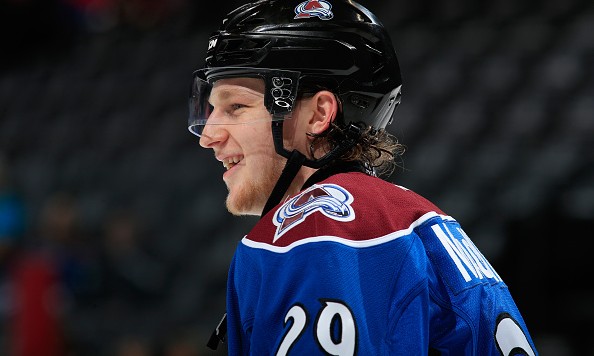The fabled “sophomore slump” is one of those media-driven narratives I mentioned in this post. It’s a storyline people believe instinctively, based on small sample sized anecdotal evidence. “Nathan MacKinnon regressed in his second year,” people say, “so ALL second year players probably struggle.”
The reasons cited for the slump are many: increased expectations, more film for opposing teams to study, a certain comfort level in the league are just a few.
Let’s look at MacKinnon: after scoring 24 goals and tallying 39 assists over 82 games in 2013-14, his rookie year, MacKinnon only played 64 in ’14-15 and scored only 14 goals. Part of our answer is right there on his player page: his rookie year, he posted a likely unsustainable, much-higher-than-league-average 10 percent shooting percentage. This season he played 18 fewer games and scored on 7.3 percent of his shots on goal.
But it’s not as though MacKinnon suddenly forgot how to skate or stickhandle. In terms of possession and scoring chance percentage relative to his team, MacKinnon was still the best player on the Avalanche. He’ll be just fine.
He’ll be just fine like some of this season’s other second-year players , who experienced no “slump.” Brock Nelson was just fine in year two. Nikita Kucherov: not too bad either. Sean Monahan? Pretty good too.
Speaking of Monahan, he doesn’t buy into this “sophomore slump” stuff:
“I think you should be better in your second year than your first year. I don’t really get that theory (of a slump). You have a year under your belt and you come into your second year, you know what to expect. I think every guy should be better in their second year than your first year.”
Now, merely citing a few players whose point totals didn’t drop off a clip in their second seasons isn’t a strong argument that sophomore slumps don’t exist at all, but it does demonstrate they don’t happen to everybody. And if they don’t happen to everybody, “sophomore slumps” are not concrete facts of life in the NHL. They’re subject to the same random fluctuation and regression to the mean as other common hockey narratives.
Expect MacKinnon to continue his path toward superstardom next year because he’s proven he’s an elite NHL player.

